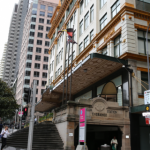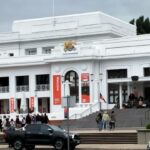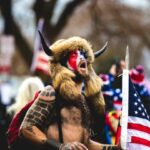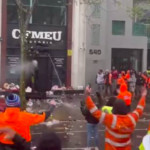Sovereign Citizens: A Burgeoning Breed of Domestic Terrorist
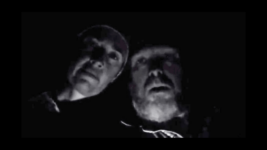
Last week’s massacre at Wieambilla in the Queensland Western Downs region reveals that the schism that developed in Australian society during the pandemic lockdown period has produced a small but dangerous group of new extremist actors.
This outcome was similar in nature to the split that occurred in the US with the coming of Trump mid-last decade, which peaked with the storming of Capitol Hill in January 2021, with the difference being here, that the rise in far-right conspiracy theorists was triggered by the impact of COVID.
Queensland residents Gareth Train, partner Stacey and brother Nathaniel shot and killed two police officers and a neighbour on 12 December, when four officers attended their Wieambilla property, looking for Nathaniel, who’d been reported missing to NSW police just days earlier.
Gareth posted twelve homemade videos on a since-deleted YouTube channel in the days leading up to the killings. These portrayed the trio to be sovereign citizens: individuals who believe the rule of law doesn’t apply to them and further shun the government as illegitimate.
The videos also suggest that the Trains had been visited by police in the past and were preparing for another such visit. And the Queensland Police Service is now investigating whether the trio, who were dressed in camouflage gear when officers arrived, had lured them onto the property.
“Devils and demons”
As Crikey reported last Friday, the Trains were documenting their thoughts in videoclips prior to the gunning down of officers, which is an episode that led to a six hour standoff that involved sixteen police officers and came to an end when law enforcement shot and killed the trio.
Following the initial gunning down, husband and partner Gareth and Stacey posted a thirteenth video of themselves shrouded in darkness proclaiming that they’d killed the young officers, who they referred to as “devils and demons”, because they were trying to do the same to them.
Four officers appeared at the Wieambilla property on the Monday afternoon to check for Nathaniel’s whereabouts, as he’d been reported missing in NSW a few days prior.
The sovereign citizens then fired upon the unsuspecting officers as they appeared on the remote property. Two officers were shot dead. A third escaped after being hit by a bullet, while a fourth hid in long grass, which the killers then set alight in an attempt to flush them out.
Meanwhile, 58-year-old neighbour Alan Dare, who’d heard gunshots and saw smoke billowing, made his way to the Train property, believing the house was alight, and he was also gunned down by the sovereign citizens on approach.
White supremacist leanings
The group of far-right protesters who set up camp on the lawns of Old Parliament House in Canberra last January, included sovereign citizens.
These individuals not only encroached upon the five-decade-old Aboriginal Tent Embassy site, but they went on to set fire to the doors of the building that was the former seat of government.
The Sovereign Citizen movement was established in the US in the early 1970s by William Potter Gale, who was an adherent of the Christian Identity belief system, which considers white people superior to nonwhite people.
Sovereign citizens prefer to be called living people and they’re antigovernment in stance. They believe that statutory laws and paying taxes don’t apply to them, however they do follow common law and look to the Magna Carta, a 1215 British royal charter of rights, to uphold their own.
Over the two years when pandemic restrictions were being applied in this country, the Sovereign Citizen movement began taking hold amongst those feeling alienated by the government approach to COVID, as they considered it had no right to issue them with stay-at-home orders.
A growing suburban threat
In one of their YouTube videos, the Trains referenced some of ASIO boss Mike Burgess’ comments about the COVID-19 pandemic having led to a spike in radicalisation and extremism, with the irony being that the head spy was referring to people just like them.
In his 2022 Annual Threat Assessment, Burgess, ASIO director general, outlined that while his agency’s terrorism caseload has dropped, “there’s been a distinct increase in radicalisation and specific-issue grievances”.
The top spy explained that these grievances have taken the form of opposition to lockdowns and vaccinations and have, at times, led to violent incidents, some of which had occurred during “COVID-related protests fuelled by antivaccination, anti-lockdown and antigovernment agendas”.
“Some of the alleged violent acts at the recent Old Parliament House protest are a case in point,” Burgess said during his February address.
“The individuals involved were driven by a diverse range of grievances, including antivaccination agendas, conspiracy theories and antigovernment sovereign citizen beliefs.”


